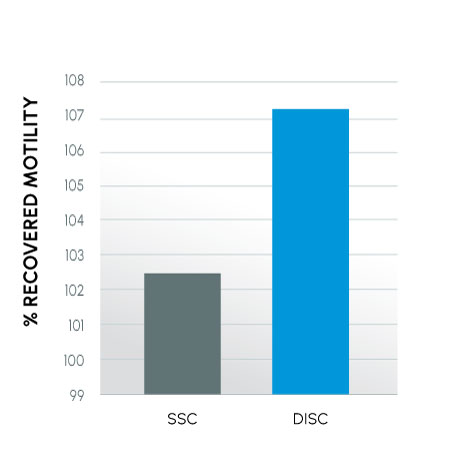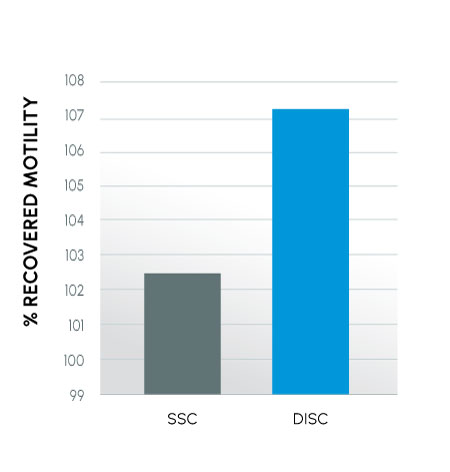Studies
A Retrospective Review of IUI Clinical Outcomes Following Semen Collection in the ProteX versus a Standard Specimen Cup
Preliminary Clinical Outcomes in an IVF Program using the ProteX versus a Standard Specimen Cup for Semen Collection
Early Fertility Trials of Semen Collection Device Previously Demonstrated to Improve Semen Parameters and Pregnancy Rates in Animal Models
Pregnancy Trials Using the Device for Improved Semen Collection
Physiological and Biochemical Assessment of a New Semen Collection Device
Continued Evaluation of a New Semen Collection Technique / Container in Subfertile and Infertile Individuals Using a Cross-species Model
New Semen Collection Technique / Container Improves Semen Quality
Improving Semen Quality Using a Modified Collection Technique
A Novel Collection Technique for Improved Semen Quality
Improvement of the Semen Collection Environment Using a New Semen Collection Device
ProteX Original Research | Human Study
Early Fertility Trials of Semen Collection Device Previously Demonstrated to Improve Semen Parameters and Pregnancy Rates in Animal Models
Authors
- Department of Obstetrics and Gynecology, Texas Tech University Health Sciences Center, Amarillo, TX
- Department of Obstetrics and Gynecology, Texas Tech University Health Sciences Center, Amarillo, TX
- Department of Animal and Food Sciences, Texas Tech University, Lubbock, TX
Publication
Objective
It is well documented that sperm are susceptible to shock during processing which often induces biochemical pathways leading to cell death. Previous animal studies from this lab suggest a modification of the collection technique (Device for Improved Semen Collection; DISC) can prevent activation of these pathways, yielding larger, more motile pools of sperm for treatment and resulting in higher pregnancy rates. The objective of the present study was to evaluate the DISC in humans.
Design
Lab-based trials in donors and infertility patients.
Materials and Methods
Donors collected in a standard specimen cup (SSC) and the DISC. The samples were then processed and cultured for 24 hours. Aliquots were taken, over time, for semen analysis using CASA, and biochemical assessment, including: acrosomal status, lipid peroxidation, mitochondrial membrane potential (MMP) and DNA damage. A preliminary clinical trial was then conducted comparing the DISC to SSC. Couples undergoing IUI alternated semen collections between the DISC and SSC for up to 6 cycles.
Results
Conclusions
As in the animal studies, results suggest improved semen quality from the DISC. Larger numbers are needed to determine if improved semen quality will lead to the increased pregnancy rates seen in other species.
Supported by
TTU Office of Commercialization.
Figure 1
Rate of post-wash sample recovered motility

A total of 51 cycles were completed by 24 couples recruited from two fertility centers and randomized. 25 cycles were measured in the DISC and 26 in the SSC. The rate of post-wash sample recovered motility (% of post-wash motility / % pre-wash motility) reflects how many motile cells per mL are present after washing.
Insights
Knowing that both the protective properties of ProteX and the addition of media yield biochemically and physiologically healthier sperm, researchers naturally questioned if healthier sperm result in healthier pregnancies. A very small trial of 24 patients was undertaken to evaluate if ProteX is equivalent to standard collection methods.
While there is often an expected lift in motility after washing sperm, there is no benchmark for recovered motility. It was found that across all patients, 5% more motile sperm were recovered post-wash when patients used ProteX. While this may seem like a small percentage, a 5% increase may be of relative significance as we look at healthy pregnancies and live births (FIGURE 2).
Figure 2
Conceptions and Live Births

Insights
As expected with this sample size, there was no statistical difference in conception rate. What was not expected by the team was that while over half of the patients who conceived using the standard cup experienced a miscarriage, all patients who conceived using ProteX had a baby come to full term, suggesting that healthier sperm result in more live births.
Direct insights into the research, methodology, and results have been added to this summary by the co-inventors themselves. This additional information is intended to provide helpful context to professional practitioners and does not fundamentally change the outcomes or interpretation of the published results. All ProteX research content and material is the property of Reproductive Solutions and may not be redistributed or republished without our consent. All rights reserved.
